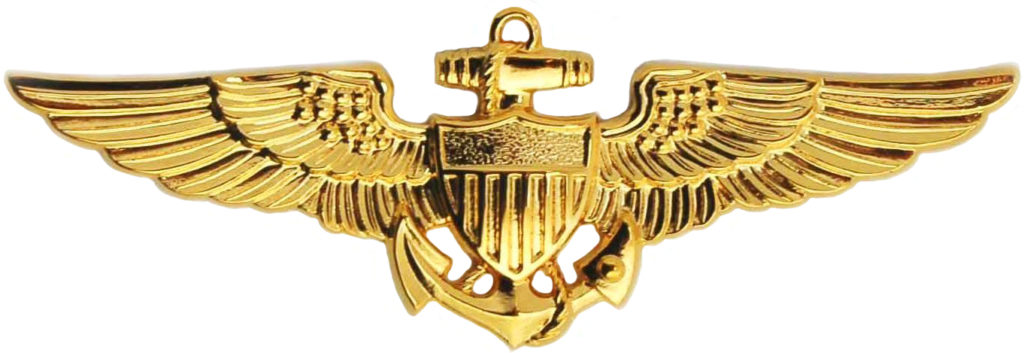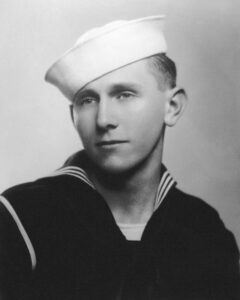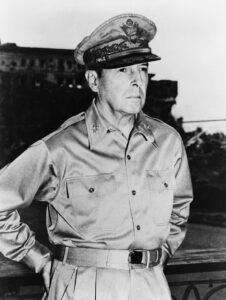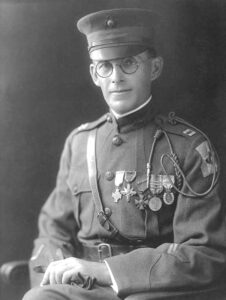- Date of Action: April 7, 1943
- Squadron: Marine Fighting Squadron 221 (VMF-221)
- Location: Near Guadalcanal Island
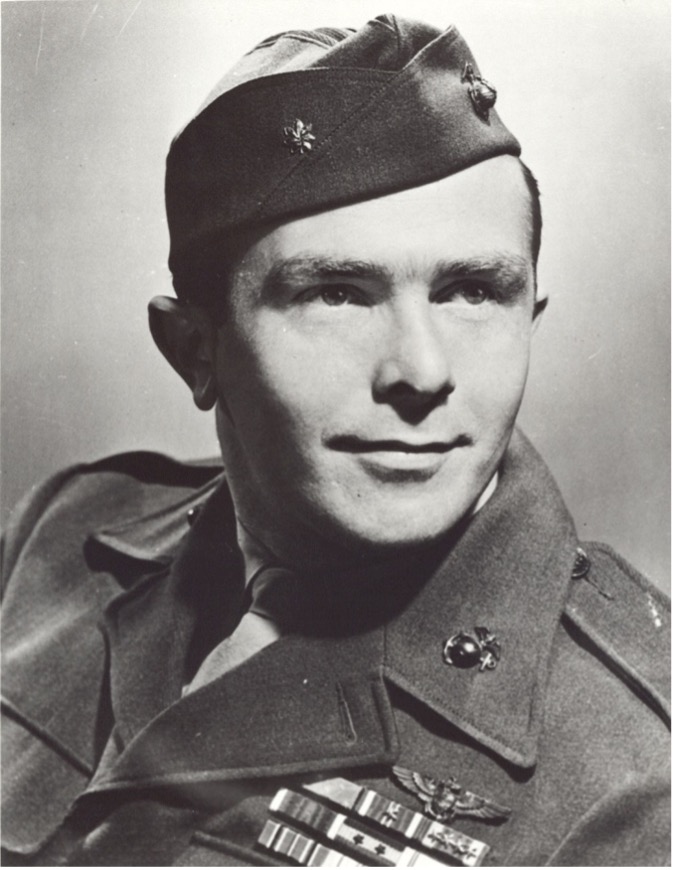
James “Zeke” Swett, was commissioned as a Marine Corps second lieutenant on April 16, 1942. Earning his gold wings in late 1942, he was assigned to Marine Fighting Squadron 221 (VMF-221) stationed at Henderson Field on Guadalcanal Island in the Solomon Islands chain. Swett wanted nothing more than to use his Grumman F4F Wildcat fighter to shoot down as many Japanese planes as he could. The brash young aviator would get his chance to do so during a famous air battle on April 7, 1943.
Soon after landing his Wildcat fighter, Swett was quickly turned around and sent back aloft as part of a huge American force sent to oppose a massive Japanese strike force headed for American ships at anchor near Tulagi. Commanding a division of Wildcats from VMF-221, Swett led a force that formed just a small part of the sixty-seven fighters sent to intercept a Japanese air formation estimated at more than 230 Mitsubishi A6M2 Zero fighters and bomb-carrying Aichi D3A “Val” dive bombers.
As the two forces engaged each other, Swett spotted the huge formation of Japanese Vals that were just beginning their steep descent down on the American ships below. Flying a Wildcat named “Melvin Massacre,” Swett lined up behind several of the Vals and quickly knocked down two of them with his plane’s six .50 caliber machine guns. While Swett was dispatching his third Val, a 40mm anti-aircraft shell from one of the American ships below hit his left wing. The wounded Wildcat was still flyable despite the damage, and Swett continued to stay in the fight.
Locating five more Japanese dive bombers flying away from the attack, Swett pushed his throttle forward and quickly lined up his fighter behind the Japanese. From the six o’clock low position, he shot down the two Vals at the back of the formation. Soon a sixth Val fell victim to Swett’s guns. Now alerted to this American fighter, the remaining Val dive bombers began to more aggressively maneuver. One of the Vals inadvertently flew in front of Swett’s Wildcat and it too was soon shot down with a deflection shot. Now with seven victories to his credit, Swett looked to use his final .50 caliber rounds to shoot down his eighth plane. But here, his luck began to run out. As he maneuvered his Wildcat into position, the rear gunner of the next Val directed an accurate burst of 7.7mm rounds into the engine and canopy of Melvin Massacre—wounding both the plane and Swett. Despite his pain, Swett fired into the Val which soon emitted the tell-tale smoke from a stricken engine. But as Swett watched this eighth victim descend into a bank of clouds, his own plane seized up and he was forced to ditch the Wildcat in the waters below. Swett escaped his sinking plane and was soon rescued by an American PT boat in the area.
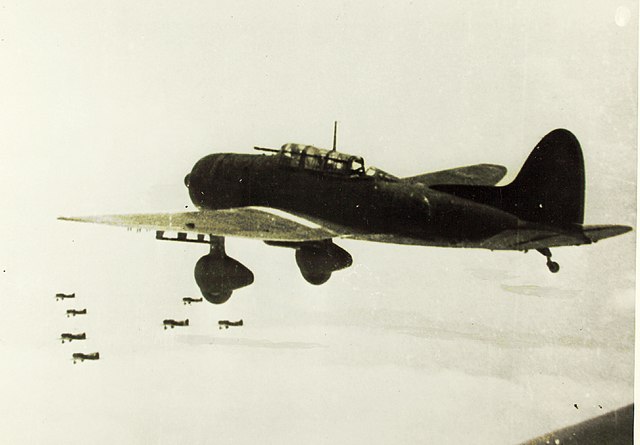
James Swett’s seven confirmed victories and one probable became the new one-mission record for the Marine Corps, and word of the 22-year-old’s actions soon caught the attention of senior officials in the theater. Vice Admiral Marc Mitscher, commander of all American and allied aircraft in the Solomons theater, recommended the new “Ace in a Day” for the nation’s highest military decoration. On October 12, 1943, on Espiritu Santo Island, First Lieutenant James Swett received the Medal of Honor from Maj. Gen. Ralph Mitchell.
Swett returned to combat and scored seven and half more victories flying the F4U Corsair.
Medal of Honor Citation
For extraordinary heroism and personal valor above and beyond the call of duty, as division leader of Marine Fighting Squadron 221 with Marine Aircraft Group 12, 1st Marine Aircraft Wing, in action against enemy Japanese aerial forces in the Solomon Islands area, 7 April 1943. In a daring flight to intercept a wave of 150 Japanese planes, 1st Lt. Swett unhesitatingly hurled his four-plane division into action against a formation of 15 enemy bombers and personally exploded three hostile planes in midair with accurate and deadly fire during his dive. Although separated from his division while clearing the heavy concentration of antiaircraft fire, he boldly attacked six enemy bombers, engaged the first four in turn and, unaided, shot down all in flames. Exhausting his ammunition as he closed the fifth enemy Japanese bomber, he relentlessly drove his attack against terrific opposition which partially disabled his engine, shattered the windscreen, and slashed his face. In spite of this, he brought his battered plane down with skillful precision in the water off Tulagi without further injury. The superb airmanship and tenacious fighting spirit which enabled 1st Lt. Swett to destroy seven enemy bombers in a single flight were in keeping with the highest traditions of the U.S. Naval Service.
